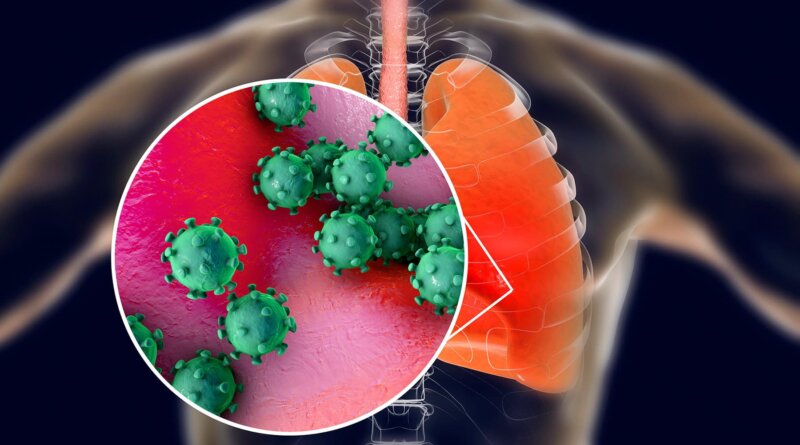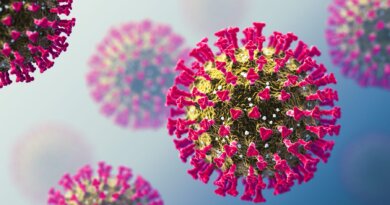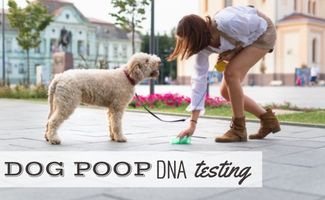Beyond Babies, RSV Infections Put Older People at Risk, Too
Dec. 5, 2022 – The respiratory syncytial virus (RSV) “season” this year is notable for a number of reasons, including the relatively early and large spike in cases that is challenging the capacity of children’s hospitals nationwide.
But the spotlight on pediatric cases is overshadowing how this virus also raises risk for people 65 and older. RSV in older Americans “remains under-recognized by both physicians and especially the public,” says Ann R. Falsey, MD, a professor at the University of Rochester School of Medicine in New York.
Even the family of the president of the National Foundation for Infectious Diseases has not been spared.
“Our family had what’s a pretty typical experience of RSV — where the little ones got it first,” says foundation president Patricia (Patsy) A. Stinchfield, a certified pediatric nurse practitioner. Her immediate family includes her and her husband, both in their 60s; their daughter and her husband, in their 30s; and two grandchildren, who are 3 years and 16 months old.
Stinchfield and her husband help with child care much of the week, “so we’re with the kids a lot,” she says.
It started when the 3-year-old went to preschool and came home with what seemed like a mild cold at first. Then a note came home that three kids in her classroom tested positive for RSV, “so it was very likely that is what she had, although she was never tested,” Stinchfield says. “The way the disease progressed was very much like RSV.”
The 3-year-old then passed the infection to the 16-month-old. They both had low-grade fevers, runny noses, and coughing, but not too much wheezing.
Stinchfield, her daughter, and her husband each had mild symptoms for less than a week. “My whole career has been in pediatrics with kids coughing directly in my face, so I think I have some pretty good RSV antibodies,” she says.
Her husband was not as fortunate. “My husband, who is the oldest at 66 years old, is just now, 4 weeks later, getting his cough settled down.”
Illustrating how RSV can be more serious in older adults, “he had a lot of wheezy coughing, bad body aches, and he actually was in bed for the first few days. He really just had a hard time catching his breath,” she says.
“That’s typical for RSV. After you’re done with the infectious period and you’re starting to feel a little bit better, you can have a lingering cough for 3 to 4 weeks,” Stinchfield says.
Similar Symptoms
Diagnosis in both the young and old can be challenging because RSV symptoms often overlap those of the flu, COVID-19, the common cold, and other illnesses. Clues that point to RSV include wheezing – a high-pitched breathing sound – and using stomach and other muscles to help with breathing.
The symptoms of RSV in younger and older people are often similar. “Many things are the same, especially the prominence of severe cough and airway disease,” says Richard G. Wunderink, MD, a professor of medicine at Northwestern University Feinberg School of Medicine in Chicago.
But because children have smaller airways than adults, the inflammation caused by RSV can cause more trouble in younger patients, Wunderink says. Clearing increased mucus can be more difficult, for example.
That much mucus can plug the child’s airway and even cause a lung to collapse. This condition, known as atelectasis, “is a major reason for admission to pediatric ICUs,” Wunderink says
In contrast, he says, “Adults have bigger airways, so we don’t see as much mucus plugging and atelectasis.”
RSV Risks in Older People
More older people are getting RSV from exposure to grandchildren who have the virus, Wunderink says.
The risks in people 65 and older differ primarily because of weaker immune systems connected to aging and other health conditions. Wunderink pointed out in a 2017 study that said “as the number of elderly adults and those with chronic medical conditions increases, the burden of viral respiratory infections will increase.”
People with heart and lung problems are at highest risk, Falsey says. An infection can worsen chronic obstructive pulmonary disease, emphysema, heart failure, or asthma, for example.
Falsey co-authored a June 2022 review and analysis of 14 studies that found, depending on the health condition, people older than 65 who sought medical attention for RSV were up to 28 times more likely to be hospitalized, compared to someone the same age without a chronic medical condition.
Tracking the Symptoms
It’s important to keep a close eye on someone with RSV of any age to make sure the symptoms don’t worsen, Falsey says. For example, if an older person with RSV is “very frail, elderly, or has serious underlying health issues, follow-up in a day or two is needed to make sure they don’t get into trouble and need medical care.”
The weekly RSV rate by age group reported by the CDC shows RSV hospitalizations are more than 10 times more likely for children under 5 years, compared to adults 65 years and older. The rate for the week ending Nov. 19 was 36 hospitalizations per 100,000 people in the younger group, compared to 3 per 100,000 in the older group.
But even though it’s less common, RSV can be serious in some older people. The CDC also estimates 60,000 to 120,000 older Americans get hospitalized with RSV infections each year, and about 6,000 to 10,000 die from the infection.
“What we worry about with older people is that sometimes, that can turn into a secondary bacterial infection that settles in one part of your lung, causes you to have pneumonia, and that brings you to the hospital,” Stinchfield says. “That’s where we get some of these startling numbers” regarding hospitalizations and deaths in people 65 and older.
Stinchfield also shared a practical tip. “RSV is a virus that is very durable on surfaces, especially smooth surfaces like kitchen countertops, tables, and remotes – those high-touch surfaces.” If someone in your household has RSV, frequently cleaning with antiviral wipes could help reduce the spread, she says.
Potential RSV Vaccines
With no specific antiviral approved to treat RSV infection, many people will be prescribed supportive care. This means treating the symptoms and not the illness directly.
“Until we [had] specific treatments or preventions, differentiating between the various types of viral respiratory tract infections wasn’t important,” Wunderink says. “Treatments for influenza and SARS-CoV-2 have changed that.”
Multiple vaccines to prevent RSV infection are in development and are expected to be approved first for adults.
On a positive note, RSV is getting diagnosed more frequently, Falsey says, because the tests doctors use to diagnose the flu and COVID-19 often detect RSV as well.




